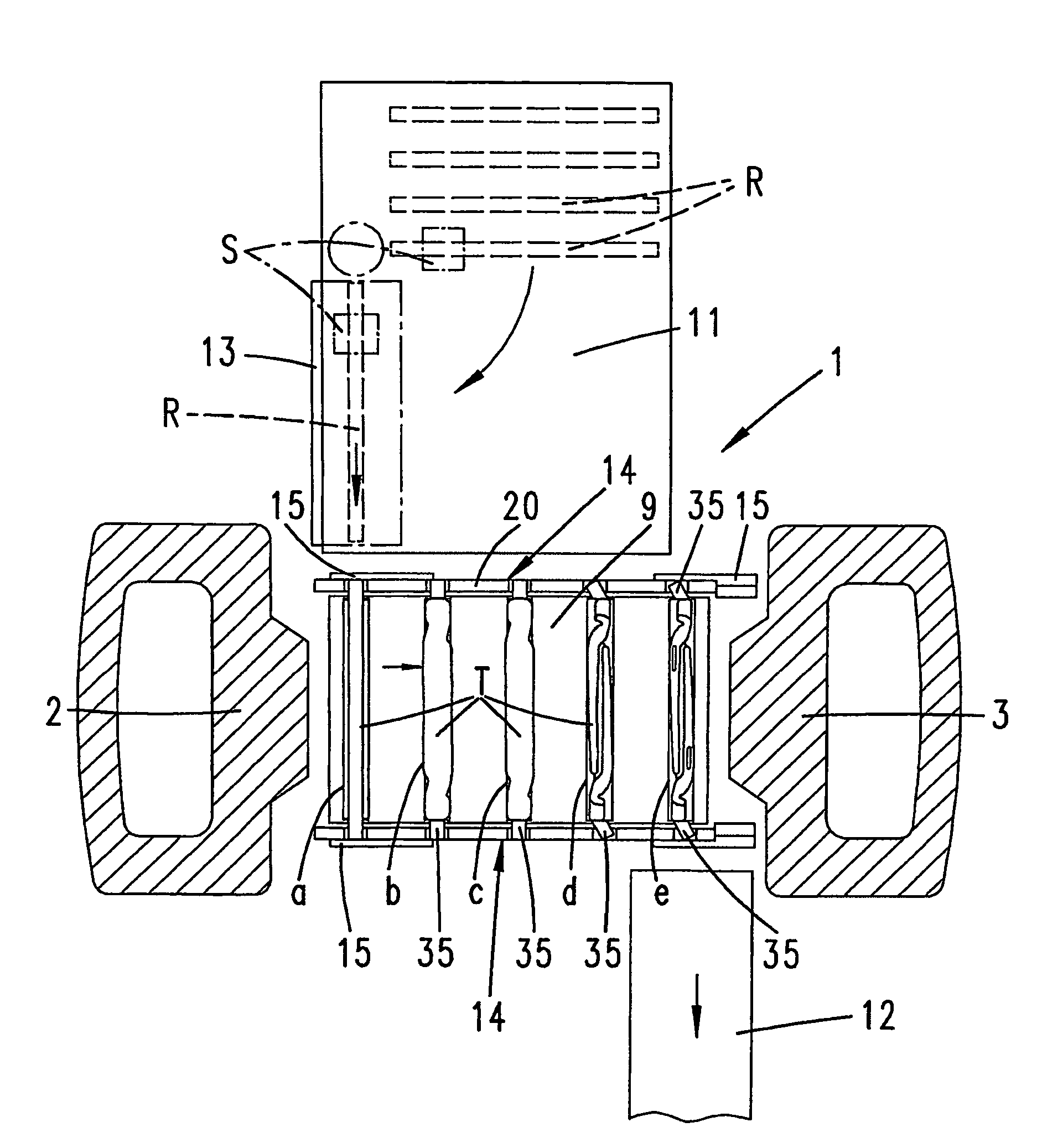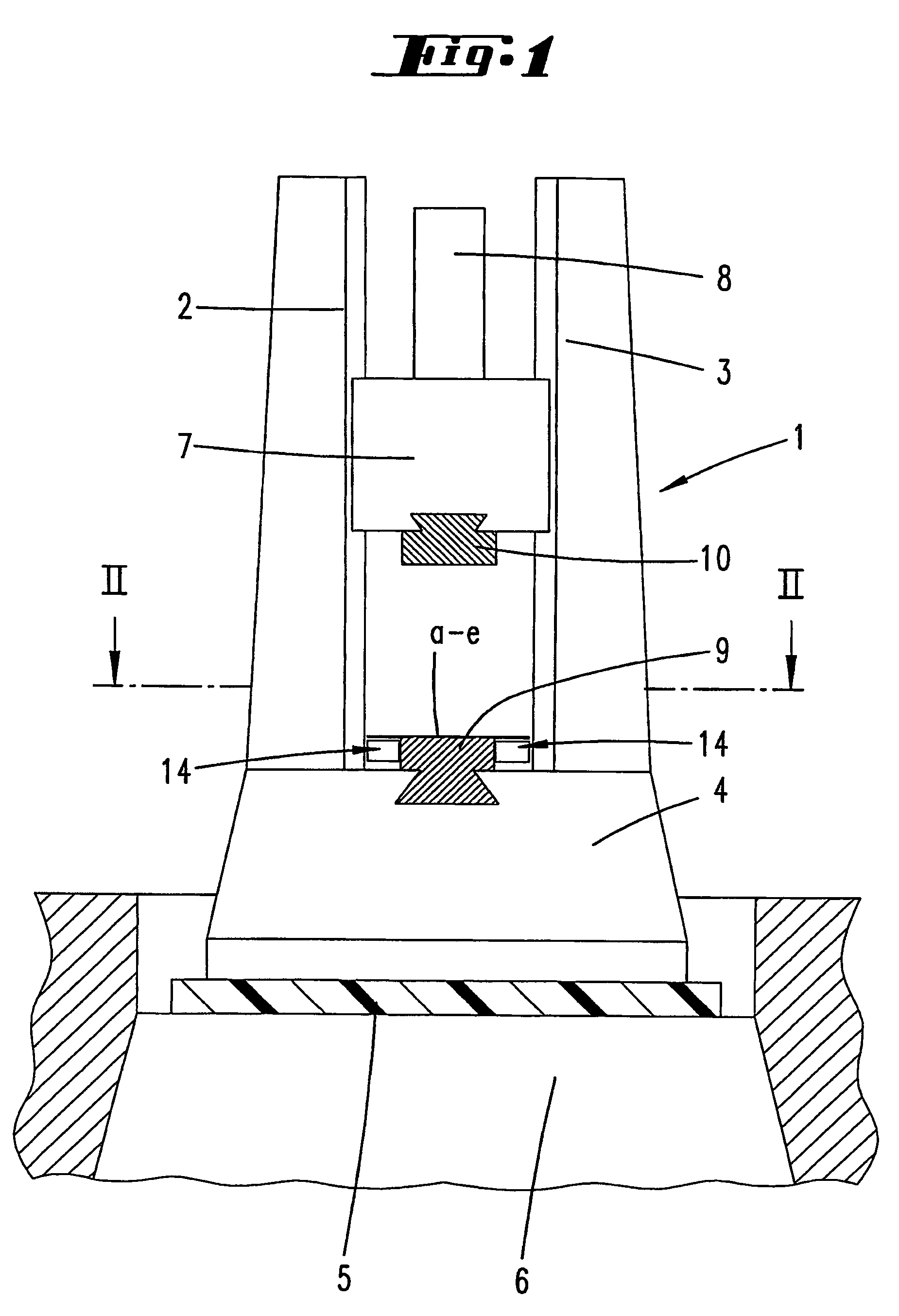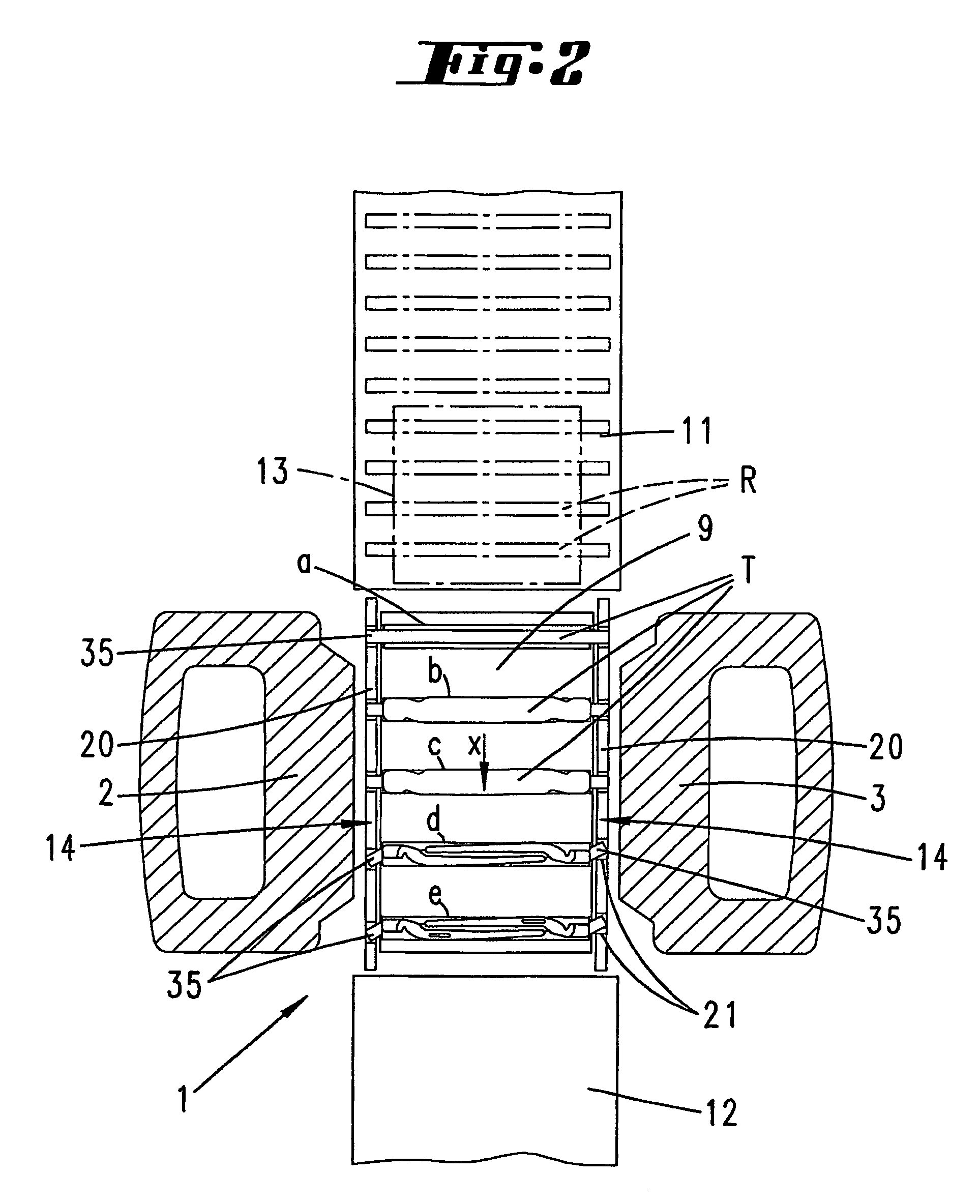Drop forging method and forging device for carrying out said method
a forging method and a technology of forging devices, applied in the field of drop forging methods, to achieve the effects of greater dimensional accuracy, better surface, and greater length
- Summary
- Abstract
- Description
- Claims
- Application Information
AI Technical Summary
Benefits of technology
Problems solved by technology
Method used
Image
Examples
first embodiment
[0026] as shown in FIGS. 1 to 4, the forging device for carrying out the method is designated by the number 1. The forging device 1 has two guide pillars 2, 3, disposed parallel to each other. The latter extend from an anvil block or a base plate 4, which for its part is supported on a foundation 6 by means of an intermediate layer 5.
[0027]The guide pillars 2, 3 accommodate between them a ram 7, which can be moved in the vertical direction and is engaged by a drive 8.
[0028]Between the pillars 2, 3, the base plate 4 carries a lower die 9, which can be secured there by means that are not represented. Opposite the lower die 9, the ram 7 is provided on its underside with an upper die 10.
[0029]The die 9 has a rectangular outline and forms on its upper side a plurality of impressions a, b, c, d and e, positioned one adjacent the other. The impression a is the first impression and the impression e is the final impression. The impressions a to e serve for accommodating parts T to be shaped....
second embodiment
[0035] as shown in FIG. 5, the same components have the same reference numerals. As a departure, the impressions a to e of the die 9′ are now disposed one adjacent the other in a connecting line of the guide pillars 2, 3. This means that the parts accommodated by the impressions are successively displaced on this connecting line during the forging.
[0036]A transporting mechanism 11 similar to in the case of the previous embodiment is then provided. To allow the first blank R in the conveying direction to be transferred as intended to the first impression a, a turning station S is associated with the transporting mechanism 11, which station in each case turns the corresponding blank R through 90° in accordance with the forging frequency and allows it to be pushed into the first impression a. Also provided in this version is a heating system 13, by means of which the blanks delivered to the forging device 1 are brought to the requisite temperature.
[0037]Also represented in this version...
third embodiment
[0042] as shown in FIGS. 8 to 10, the same components have the same reference numerals.
[0043]As a departure from the first embodiment, forging grippers 28 and transporting grippers 29, forming a conveying mechanism 22, are now provided on both sides of the lower die 9. Furthermore, the guide pillars 2, 3 have level with the lower die 9 a recess 30 facing the latter for receiving the forging and transporting grippers 28, 29. The latter are formed in such a way that they are hammer-resistant and therefore move in concert with the forging device 1, which is configured as a forging hammer, with every forging blow. As also in the case of the first embodiment, the hammer is a drop hammer. As in the case of the first embodiment, the longitudinal extent of the impressions a to e then runs in a transversely directed manner in relation to the longitudinal sides of the die 9. Two transporting bars 31, 32, which are disposed one above the other and for their part are carriers of the transportin...
PUM
| Property | Measurement | Unit |
|---|---|---|
| frequency | aaaaa | aaaaa |
| time | aaaaa | aaaaa |
| forging frequency | aaaaa | aaaaa |
Abstract
Description
Claims
Application Information
 Login to View More
Login to View More - R&D
- Intellectual Property
- Life Sciences
- Materials
- Tech Scout
- Unparalleled Data Quality
- Higher Quality Content
- 60% Fewer Hallucinations
Browse by: Latest US Patents, China's latest patents, Technical Efficacy Thesaurus, Application Domain, Technology Topic, Popular Technical Reports.
© 2025 PatSnap. All rights reserved.Legal|Privacy policy|Modern Slavery Act Transparency Statement|Sitemap|About US| Contact US: help@patsnap.com



